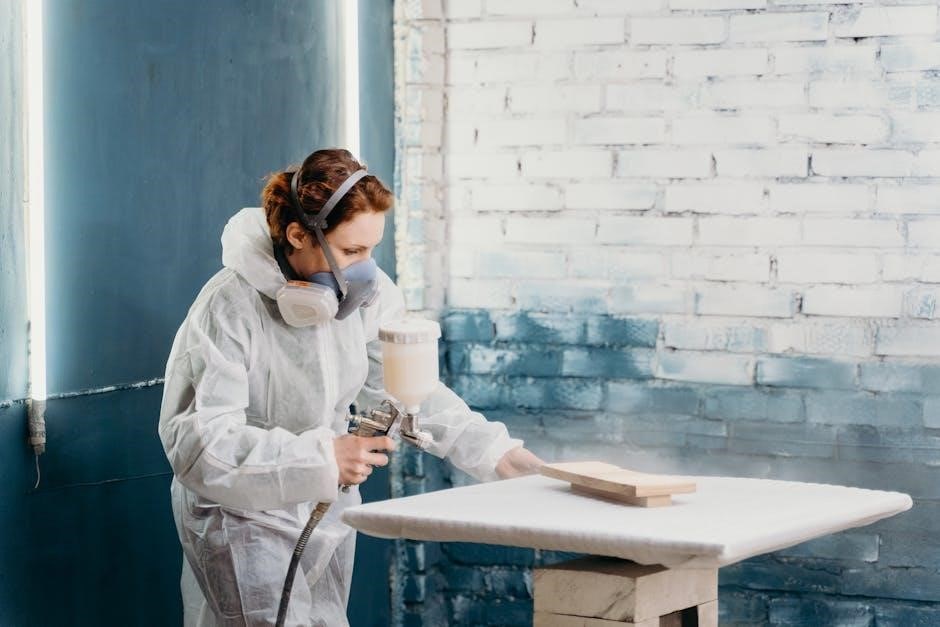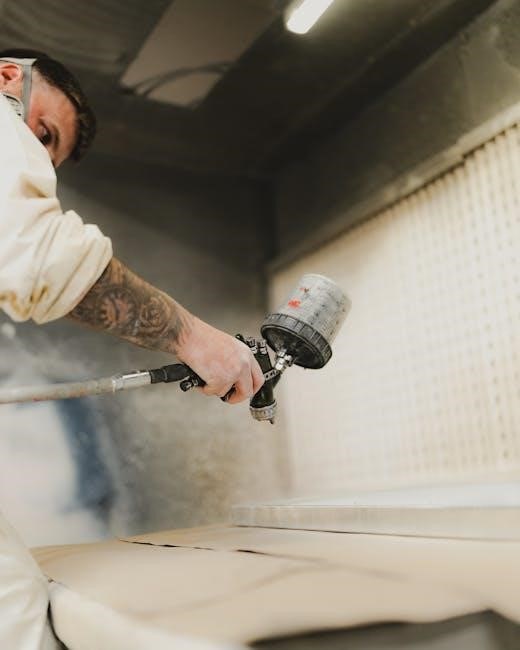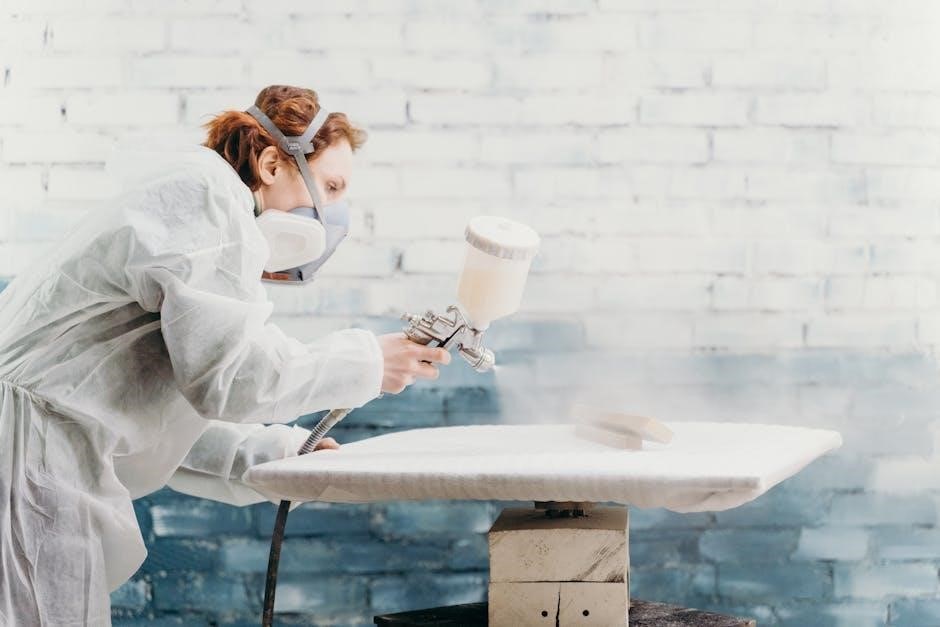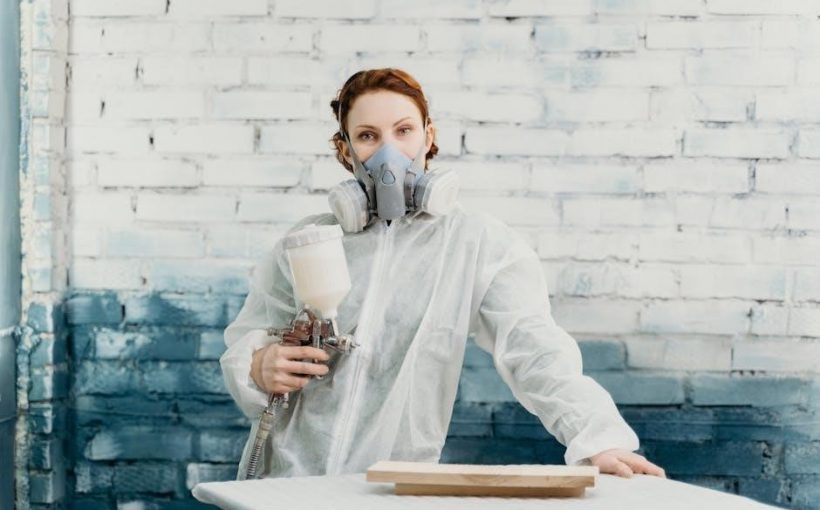A manual airbrush is a versatile tool offering precision and control, ideal for intricate designs in makeup, crafting, and model painting. Its portability and adjustable airflow make it a favorite among artists and hobbyists, providing smooth, consistent results with minimal effort.
1.1 What is a Manual Airbrush?
A manual airbrush is a device with a nozzle and needle designed for precise paint application. It operates using compressed air, allowing control over paint flow. Unlike automatic models, it relies on manual adjustment, making it suitable for detailed work without needing external power sources, popular among artists and hobbyists.
1.2 Brief History and Evolution
The manual airbrush has evolved significantly since its invention in the late 19th century. Initially simple, it became more sophisticated with advancements in technology. Modern versions feature improved nozzles and needles, offering better control and precision, catering to various artistic and industrial needs while maintaining its core functionality and portability.
1.3 Key Features and Benefits
Manual airbrushes offer precise control, adjustable airflow, and interchangeable tips for varied applications. They are portable, easy to clean, and durable, making them ideal for makeup, crafting, and model painting. Their versatility and ability to handle different mediums ensure consistent, professional-quality results with minimal effort and maximum creativity.
Types of Manual Airbrushes
Manual airbrushes vary by action type, feed system, and specialized use, offering options for different precision levels, paint flow control, and application requirements across various creative fields.
2.1 Single-Action vs. Double-Action Airbrushes
Single-action airbrushes simplify control, using a trigger to release paint with airflow preset by an external knob, ideal for beginners and broad strokes. Double-action airbrushes offer precise control by adjusting airflow and paint flow simultaneously, enabling detailed, varied effects, though requiring more skill and practice to master effectively for intricate designs.
2.2 Gravity-Feed vs. Siphon-Feed Airbrushes
Gravity-feed airbrushes use gravity to supply paint from a built-in cup, offering quick color changes and precise control, ideal for detailed work. Siphon-feed models draw paint from a separate bottle, enabling larger paint capacity and continuous use, suitable for extensive projects and smooth, even coverage without frequent refills.
2.3 Specialized Airbrushes for Specific Uses
Specialized airbrushes cater to specific tasks. Makeup airbrushes feature fine tips for precise blending, while model airbrushes are designed for miniatures, offering detailed patterns. Crafting airbrushes handle thicker paints and materials like textiles, allowing for creative versatility across various artistic and practical applications.

How to Choose the Right Manual Airbrush
Selecting the right manual airbrush involves understanding your project’s requirements, considering precision, airflow control, and compatibility with your paint type. Choose based on your skill level and personal comfort for optimal results.
3.1 Understanding Airbrush Nozzles and Needles
Airbrush nozzles and needles are critical components. The nozzle determines spray pattern precision, while the needle controls paint flow. Fine nozzles suit detailed work, while larger ones handle broader applications. Needle thickness affects line width and paint viscosity compatibility, ensuring smooth, consistent results across various projects and mediums.
3.2 Air Pressure Requirements
Airbrushes require specific air pressure settings, typically between 10-30 PSI, depending on the application. Lower pressures suit fine details, while higher pressures are ideal for broader coverage. Adjusting pressure ensures optimal paint flow and minimizes clogging, allowing for smooth, consistent results across various projects and materials.
3.4 Tips for Beginners
Beginners should start with practice strokes on scrap material to build control. Use thin paint and low pressure initially. Clean the airbrush regularly to prevent clogs. Watch tutorials for technique guidance and experiment with different tips and pressures to achieve desired effects gradually.

Maintenance and Cleaning
Regular cleaning ensures optimal performance. Use a mild solvent and brush to remove paint residue. Lubricate moving parts and store the airbrush in a dry place to maintain functionality and longevity effectively.
4.1 Step-by-Step Cleaning Process
- Disassemble the airbrush, removing the nozzle and needle.
- Use a mild solvent or cleaning solution to wipe away paint residue.
- Flush the airbrush with cleaner until the liquid runs clear.
- Use a soft brush to clean intricate parts and remove dried paint.
- Allow all components to air dry before reassembling.
- Lubricate moving parts to ensure smooth operation.
4.2 Troubleshooting Common Issues
- Clogged nozzles: Use cleaning solutions and small brushes to remove dried paint and debris.
- Inconsistent paint flow: Check for incorrect air pressure or dirt buildup in the needle and nozzle.
- Leaks: Ensure all connections are tight and replace worn-out O-rings or seals.
- Spring misalignment: Verify the spring is installed correctly to maintain proper airflow and needle movement.

Techniques for Using a Manual Airbrush
Mastering basic strokes, such as lines and circles, is essential. Practice light, consistent passes to achieve smooth blends and detailed work. Regular cleaning ensures optimal performance and prevents clogs.
5.1 Basic Airbrush Strokes and Patterns
Start with foundational strokes: horizontal, vertical, and circular motions. Practice varying pressure to control paint flow. Stencils can help create crisp lines and patterns. Experiment with layering to build complexity in your designs. Consistent practice enhances control and precision, essential for mastering airbrush techniques.
5.2 Advanced Techniques for Smooth Blends
Master smooth transitions by layering thin coats and feathering edges. Use wet-on-wet techniques for seamless color merging. Adjust airflow and paint viscosity for consistent blending. Practice gradual pressure changes to achieve soft gradients. Maintain steady hand movement and experiment with angle variations to refine your blending skills for professional-quality results.
5.3 Tips for Consistent Results
Ensure consistent results by maintaining proper airflow and paint viscosity. Regularly clean the airbrush to prevent clogs. Test on a practice surface before applying final strokes. Use reference images for accuracy. Practice hand-eye coordination and maintain steady pressure. These habits will help achieve professional-quality finishes with precision and reliability every time.
Safety Precautions
Always work in a well-ventilated area to avoid inhaling paint fumes. Avoid flammable materials and keep the airbrush away from children. Ensure proper handling to prevent accidents.
6.1 Proper Handling and Storage
Always handle the airbrush with care to avoid damage. Clean it thoroughly before storage and use a protective case to prevent scratches. Store it upright in a cool, dry place, away from direct sunlight. Regularly check for blockages and ensure all parts are secure for optimal performance and longevity.
6.2 Using Protective Gear
Wear protective gear like gloves and safety goggles when using the airbrush to avoid skin contact with paint or cleaning agents. A mask is recommended to prevent inhaling fine particles or fumes. Proper gear ensures safety and prevents potential health risks associated with airbrushing materials. Always prioritize protective equipment during operation.

Applications of Manual Airbrushes
Manual airbrushes are widely used in makeup, model painting, and crafting. They are ideal for precise details in cosmetics, miniature art, and DIY projects, offering versatility and artistic control.
7.1 Makeup and Cosmetics
Manual airbrushes are essential in makeup for creating flawless finishes. They enable precise application of foundation, blush, and eyeshadow, ensuring smooth blending and natural results. Their adjustable airflow allows for subtle layers, making them ideal for professional makeup artists and personal use, enhancing beauty routines with ease and precision.
7.2 Model Painting and Miniatures
Manual airbrushes are popular among modelers and miniature painters for their precision and control. They excel at creating smooth, even base coats and blending colors seamlessly. Fine nozzles allow for intricate details, while adjustable airflow ensures crisp lines. Ideal for scales from small miniatures to large models, they enhance realism and artistic expression.
7.3 Crafting and DIY Projects
Manual airbrushes are perfect for crafting and DIY projects, offering a smooth finish on materials like fabric, wood, and plastic. They allow for custom designs, patterns, and textures with ease. Ideal for upcycling furniture, creating art on fabric, and adding unique touches to home decor, they bring creativity to life effortlessly.
Additional Tools and Accessories
Essential tools include air compressors, hoses, and paint mediums. Cleaning solutions and kits are vital for maintenance. These accessories enhance performance and ensure longevity of the airbrush.
8.1 Air Compressors and Hoses
Air compressors are essential for powering manual airbrushes, providing consistent air pressure. Hoses connect the compressor to the airbrush, ensuring smooth airflow. Portable compressors are ideal for small projects, while stationary models offer higher pressure for large-scale work. Proper maintenance of hoses and compressors is crucial for optimal performance and longevity.
8.2 Paints and Mediums
Manual airbrushes require high-quality paints and mediums for optimal results. Acrylic and enamel paints are popular choices, offering vibrant colors and durability. Mediums can be added to thin paints or create unique effects. Always ensure paint consistency is suitable for your airbrush nozzle to avoid clogging. Using compatible paints with your surface ensures professional finishes.
8.3 Cleaning Solutions and Kits
Proper cleaning solutions are essential for maintaining a manual airbrush. Use solvents or specialized cleaners to remove paint residue and prevent clogging. Cleaning kits often include brushes and wipes for thorough maintenance. Regular cleaning ensures optimal performance and extends the lifespan of your airbrush.
Best Practices for Optimal Performance
Regularly clean and lubricate your airbrush, store it in a dry place, and test it before use. Proper maintenance ensures consistent results and extends its lifespan.
9.1 Regular Maintenance Schedule
Establish a routine to clean your airbrush daily with specialized solutions, checking for blockages. Lubricate moving parts weekly and inspect the needle and nozzle monthly. Deep clean with an ultrasonic cleaner every 30 days for optimal performance.
9.2 Storing the Airbrush Properly
Store your manual airbrush in a protective case to prevent damage. Keep it in a dry, cool place, away from direct sunlight. Ensure the airbrush is clean and dry before storage to avoid clogging. Store upright to prevent paint or moisture from settling in the nozzle or needle.
9.3 Upgrading or Customizing Your Airbrush
Upgrading or customizing your manual airbrush enhances performance and personalizes use. Options include interchangeable nozzles, custom paint jobs, or ergonomic handle modifications. Experiment with aftermarket parts or DIY tweaks to suit your artistic style. Always follow manufacturer guidelines to ensure compatibility and functionality during customization.
The manual airbrush is a versatile and precise tool, essential for various artistic applications. Mastery of its techniques ensures professional-grade results and creative satisfaction.
10.1 Recap of Key Points
10.2 Final Tips for Mastering the Manual Airbrush
Practice regularly to build muscle memory and technique. Start with simple exercises before complex designs. Use high-quality paints and compatible needles for optimal results. Adjust air pressure carefully for precise control. Experiment with different settings to achieve desired effects. Keep the airbrush clean and well-maintained for consistent performance. Stay creative and patient!
